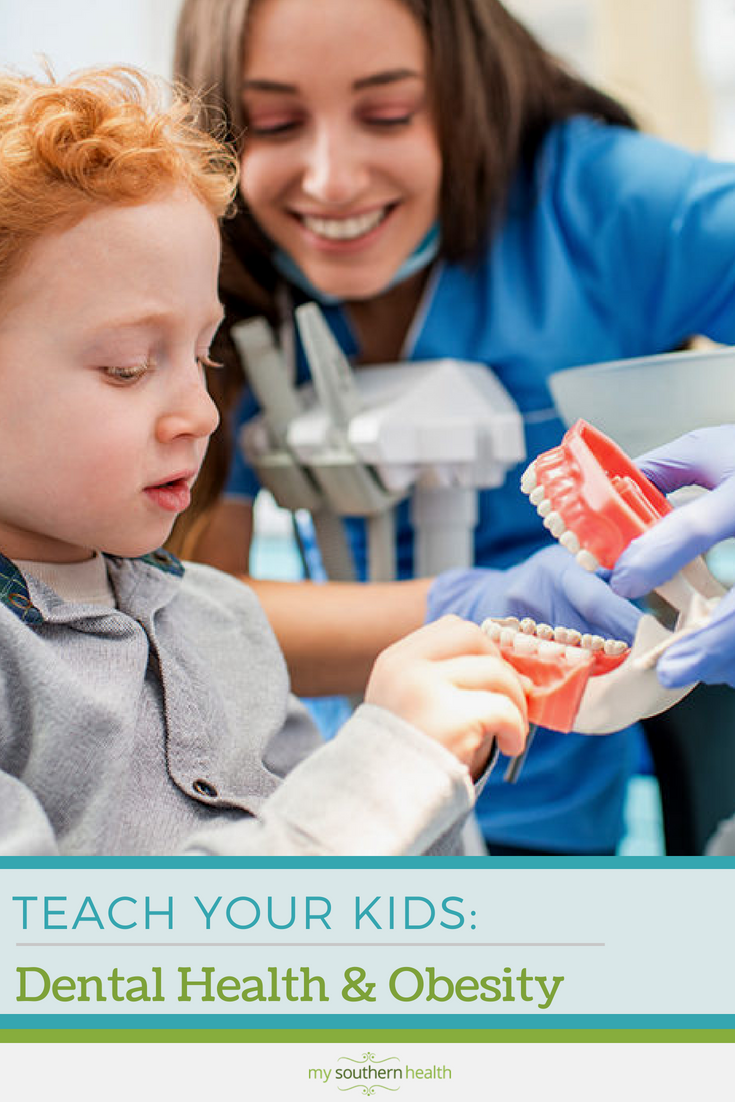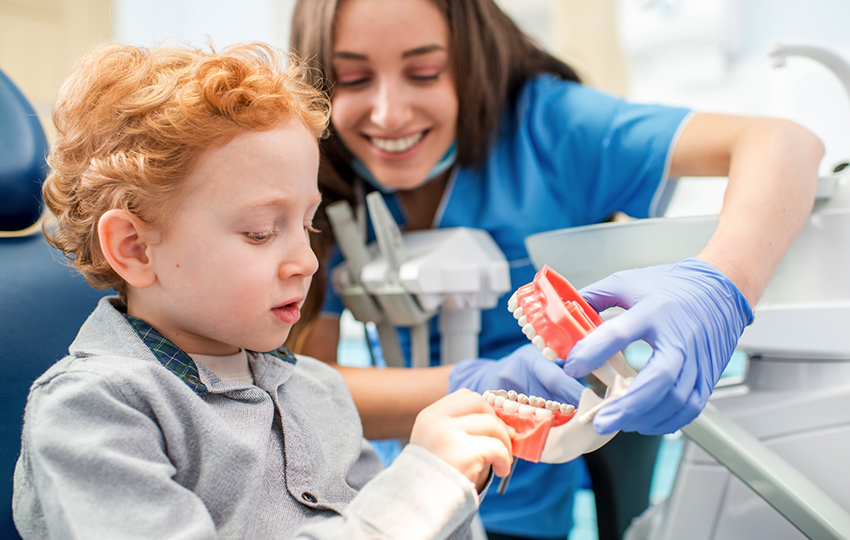Here’s a guide to talking to your kids about their teeth.
Regular brushing and flossing might be doing more for your kiddo than just preventing dreaded cavities. According to a thesis in progress in Sweden, dental health and weight may go hand in hand. Teaching your children about oral hygiene in tandem with the benefits of proper nutrition could prevent them from becoming obese.
“I think that thesis is right on the dot,” said Julie Wang Rezk, D.M.D., of Vanderbilt University Medical Center’s Oral Health Team. “Your daily routine can be pretty important,” she explained. “Most people don’t realize that. But it plays a part with self-esteem, eating better, exercising and keeping yourself healthy.”
Below, Rezk weighs in on ways parents can teach their kids about dental health alongside healthy eating habits.
Set a good example.
As parents we should lead by example as best we can. When it comes to oral hygiene, that means brushing twice a day and flossing at least once per day. “Just having your own healthy habits is going to be key in getting kids to do things,” Rezk explained.
Make a habit.
Create a regular sleep and wake schedule so that they are able to stick to healthy habits and not skip out on brushing or flossing because they are tired or cranky. “For children, you just have to make sure that you set up a routine for them,” Rezk says. “It’s something to start doing the younger they are because it becomes ingrained.”
Infuse fun into setting a habit for younger kids until they can tackle the task on their own without being asked. Gather everyone in the bathroom to brush together. Rezk said she knows families who instigate a bedtime “floss off” to see who can floss all their teeth properly the fastest. Get creative and have a good time while you’re at it. Take a few moments to educate kids on brushing technique and the importance of it.
Talk about food.
When it comes to eating habits, setting the example is imperative, as well, and same with creating meal-time routines whenever possible. Our lives get busy, and kids have evening activities, of course, so don’t stress yourself out by aiming for perfection. Instead, just be sure you’re getting some one-on-one time with them away from the television to talk about healthy food choices, and stock the fridge and pantry with those options.
Have a science discussion.
If your kids are old enough for a little at-home chemistry lesson, one way to talk about teeth and food is to get at the science behind tooth decay. Rezk recommends an educational chat about the different PH levels of water and soda and how PH affects your pearly whites.
PH level is a measure of acidity, and acidity is bad for your teeth. Most waters have a PH range from 6 to 7. The PH of Coca-Cola, however, is a 2.5. “That will definitely start to demineralize your teeth,” Rezk explained. “Most teeth will start to demineralize when you go below a 5.5.” Demineralization means tooth decay is active.
After you finish your soda, you can swish water around your mouth and bring the PH level back up a bit, but it may not get back to a 6 for a while. You can imagine what drinking soda all day does to your teeth. They remain in a state of active decay, leading to cavities. If you drink a soda occasionally, that’s OK, Rezk said. Just be sure to rinse your teeth with water afterwards.
A discussion like this can teach kids about what’s actually happening inside their bodies when they eat or drink certain foods. That knowledge can lead to making better choices.


